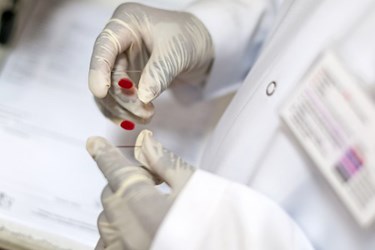New Chronic Lymphocytic Leukemia Therapy Enters Phase 1 Trial`
By C. Rajan, contributing writer

Researchers at the University of California, San Diego School of Medicine have just moved their novel monoclonal antibody called cirmtuzumab (UC-961) into a phase 1 human clinical trial for treating chronic lymphocytic leukemia (CLL).
The Phase 1 trial will test the safety and efficacy of cirmtuzumab in patients with relapsed or refractory CLL. The antibody treatment is designed to be administered by intravenous infusion every 14 days, for a treatment period of two months. CLL is the most common form of blood cancer in adults and has few effective treatments. An estimated 15,000 new cases are diagnosed each year in the United States.
The new antibody was developed as part of an ambitious research project to develop six distinct therapies against cancer stem cells. The research project was supported by the California Institute for Regenerative Medicine's HALT leukemia grant, which was awarded to Dennis Carson, MD, principal investigator, and Catriona Jamieson, MD, PhD, co-principal investigator.
Thomas Kipps, MD, PhD, led one of the six projects and generated antibodies against ROR1, resulting in the development of cirmtuzumab and its eventual progress to clinical trial.
Dr. Kipps commented, "I see cirmtuzumab as perhaps also synergizing with other forms of treatment to provide for more effective anti-cancer therapies. It's the cocktail approach, similar to what's been shown to be effective in treating patients with HIV. Multiple drugs attack multiple targets of the cancer, each eliminating subsets of malignant cells. When combined with anti-ROR1 therapy, we might also block the recurrence of cancer after treatment."
The new antibody therapy is designed to target ROR1, a protein which cancer cells use to promote tumor growth and metastasis. ROR1 is not expressed by normal adult cells, but it is singularly expressed on CLL and several other cancers, including cancers of the breast, pancreas, colon, lung, and ovary. ROR1 acted as an accelerant in mouse models of CLL, and when combined with another oncogene, it produced a faster-growing, more aggressive cancer.
The researchers believe ROR1 is a biomarker of cancer cells in general and cancer stem cells in particular. It is considered a good target for anti-cancer therapy due to its expression in a variety of cancers and its capacity to drive tumor growth and metastasis.
Dr. Kipps added, "Usually anti-cancer drugs cannot cure cancer. Even after achieving a good response to anti-cancer drugs, the cancer can come back and spread to other parts of the body. This is thought to be due to cancer stem cells, which are relatively resistant to our current anti-cancer drugs. Because cancer stem cells may require ROR1 for their growth, survival, and movement through the body, targeting ROR1 could be a way to eradicate the seeds of the cancer that are responsible for metastasis or relapse after other forms of treatment.”
